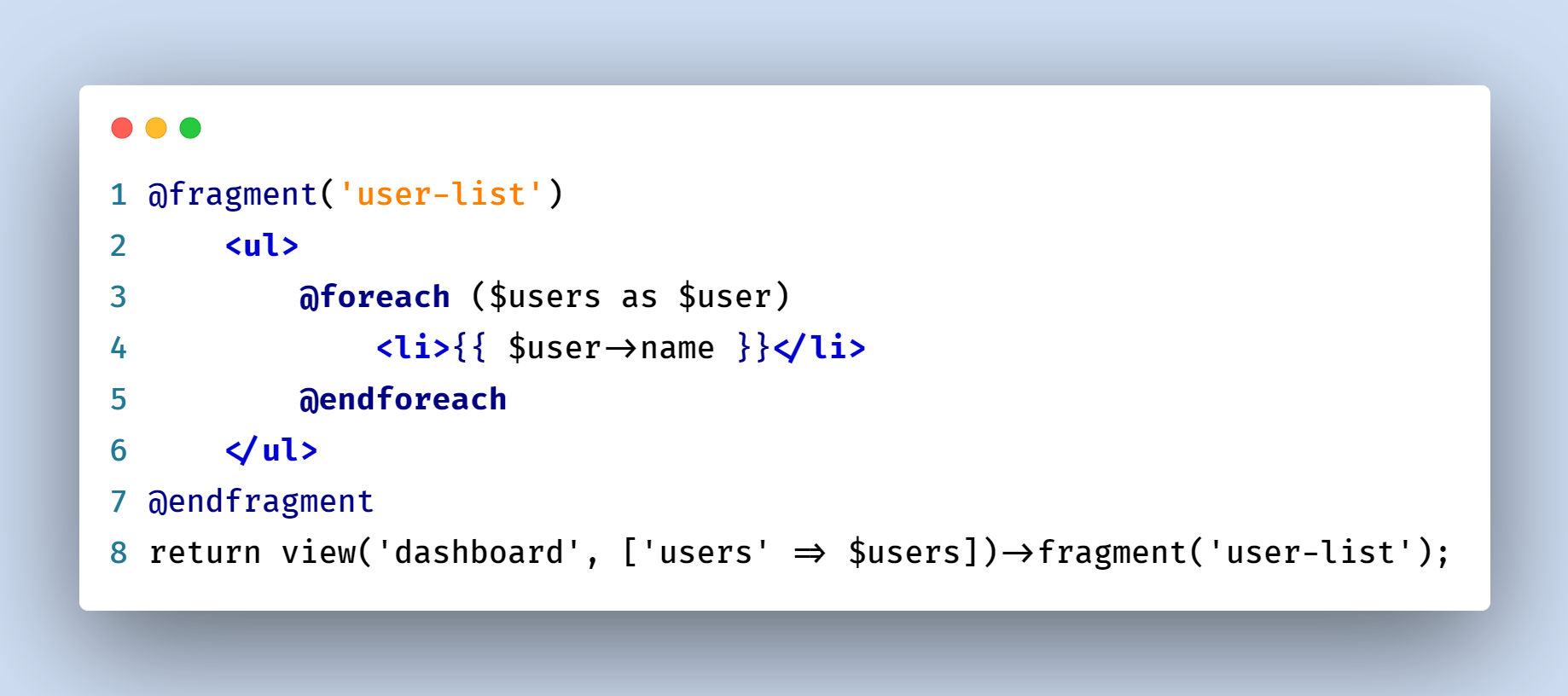Did you know that we can load specific portions of the blade in Laravel? In this tutorial, we will see how we can render a specific fragment of a blade view in Laravel 9. To do it, Laravel provides @fragment blade directives. In this example, we will see the use case and example source code of in @fragment Laravel.
When we use frontend frameworks such as Turbo and htmx, we need to only return a portion of a Blade template within your HTTP response. Blade "fragments" allow us to do just that. To get started, we have to use a portion of Blade template within @fragment and @endfragment directives:

app/Http/Controller/AnyController.php
<?php
namespace App\Http\Controllers;
use App\Models\User;
class TutorialController extends Controller
{
public function index()
{
$users = User::paginate(2);
return view('welcome', ['users' => $users])->fragment('user-list');
}
}
And now print this fragment from the view like:
resources/views/welcome.blade.php
@extends('layouts.app')
@section('content')
<div class="container">
<div class="row justify-content-center">
<div class="col-md-8">
<div class="card">
<div class="card-header">Laravel 9.x Blade Fragments Tutorial | Laravelia</div>
<div class="card-body">
@fragment('user-list')
<ul>
@foreach ($users as $user)
<li>{{ $user->name }}</li>
@endforeach
</ul>
@endfragment
</div>
</div>
</div>
</div>
</div>
@endsection
Read also: How To Use Inject Blade Directive In Laravel Blade?
Conclusion
I have tried to discuss the clear concept of blade fragments laravel 9l. Now we know how to use fragments in laravel. Hope this fragments laravel controller will help you.
